THE DIP



Welcome to the very first edition of The Dip, a new publication from the hearts and minds of the Sense Of Self team.
A few years ago now, we created Sense Of Self to be a local watering hole for our guests, our team and our community – one where everybody is welcome to experience the connection, communion, and relaxation that comes from communal bathing.
Whether people have joined us for a quick splash, a special occasion or a weekly ritual, we’ve loved seeing bonds form between people, place and practice. For us, these intangible connections – born from shared spaces and collective experiences – have transformed Sense Of Self into so much more than a bathhouse.
We created The Dip as a tangible manifestation of our philosophies and ideas, extending the Sense Of Self universe to wherever you pick up a copy. Like the bathhouse, within these pages, you’re invited to come as you are and take what you need. Whether that’s discovering ancient Roman bathing history and our favourite Italian bathing spots, learning more about your own practice or simply enjoying a quick flick – it’s all here for you.
Wherever you’re reading, as you turn these pages, we hope you relish these stories while enjoying a moment of pause.
Remember, idleness is essential to activity.
— Your friends at Sense Of Self


THE DIP IS PUBLISHED BY SENSE OF SELF
30-32 Easey St, Collingwood VIC Coming soon to Sydney. sos-senseofself.com @sos-senseofself



CONTRIBUTORS



Katherine Brabon, Hannah Bamra, Mitch Parker, Jessica Tremp, Annika Kafcaloudis, Martina Gemmola, Becki Kenworthy, Edition Prints
Sense Of Self acknowledges the Traditional Custodians of the unceded lands where we work and live, the Wurundjeri People of the Kulin Nation. We celebrate the diversity of Aboriginal and Torres Strait peoples, acknowledge their deep connection to the lands and waters of Australia, and their rich understanding of what it means to be well.




On a scientific level, sweating is our own inbuilt cooling and detoxifying system. But on a philosophical one, it triggers a heightened state of awareness between our psyche, spirit and body. And in the context of the sauna, both ring true.
The longest standing modes of sweat practices have incorporated sweating as a form of spiritual expression that has promoted physical and mental health. Because simply, it’s nice to sit motionless, be warm, and be in relative silence. It’s nice to have nothing to do, and to have your phone out of sight. An article by The New Yorker1 explores the Finns’ obsession with sweating and notes that for them, the Finnish sauna is a spiritual experience that is “probably the truest sense of community. Just going in there super vulnerable, sweating your ass off, and really connecting.” And that is its essence - it is not only about detoxification, but about stillness, resilience, and switching off.
In the sauna, our physical body largely remains still, while our inner organs are actively working under the high temperatures. Then our body’s largest organ, the skin, begins to exert sweat. Mikkel Aaland2 explores this in a book titled ‘Sweat bathing and the body’ where Mikkel mentions that “While outwardly relaxed, your inner organs are as active as though you were jogging or mowing the lawn”. And while movement is necessary to our health, having an active inner-state while being physically inactive appeals.
REFERENCES
The Finnish sauna with its wood interior is well regarded for being the catalyst for sweat. Hot stones and water pails suddenly become an environment where chemistry, biology, and psychology meet. All while we remain still. To sweat in stillness, although a lovely alliteration, is for some an action that is something to be avoided. With antiperspirants, pollution, synthetic clothing, and a physically idle lifestyle all inhibiting the flow of sweat. But when we sweat with purpose, in a place that encourages rest, we can begin to reframe our relationship to sweatingas the body begins to respond to the heat through sweating we exhale tension, promoting a deeper state of relaxation in muscles and mind, pointing to the use of sweating as a way to focus on meditative states of being.
However, rather than slipping into a state of relaxation akin to sleep, the heat exposure keeps the mind and body active. As our bodies heat up and the experience moves from relaxation to endurance, it seems that sweaters are faced with a choice to either focus on the overwhelming heat, or focus a little longer on thoughts and feelings that help one to adapt, cope, and thrive when faced with adversity. And then gently, in total stillness, we are building resilience.
1 Anna Russel, The Finnish Obsession With Sweating, TheNewYorker , (Dec, 2017)
2 Mikkel Aaland, Sweat Bathing and the Body, Sweat, (2018)

Nestled across Italy, from its sparkling shores to its alpine mountain ranges, lie bathing spots steeped in history, where the echoes of ancient Roman relaxation still linger. Whether you find yourself in the hills of Tuscany or the valleys of the Italian Alps, you’re never far from an invitation to unwind in the country’s ancient waters. These bathing spots not only provide hubs of relaxation for locals and visitors alike but also serve as a bridge between past and present, where the legacy of Roman baths lives on thousands of years later.
One of the world’s most influential bathing cultures, archeologists believe Roman bathing began in the Italian peninsula around the 2nd century BCE. Over the next few centuries, baths spread throughout the empire and became an integral part of everyday life. By the 4th century CE, there were around 850 baths in Rome alone.
Ancient Roman bathhouses were opulent sanctuaries of relaxation and socialisation that featured elaborate architecture, numerous heated pools, intricate mosaics and grand social spaces. Inside, all members of society were welcome, regardless of status or wealth. Stripped of class markers like clothing and jewellery, everyone mingled together while enjoying bathing rituals, exercise, intellectual discourse and, more importantly, the gossip of the day.
As the empire began to decline, the great bathhouses of Rome were neglected and gradually fell into disrepair. While many ruins have been uncovered and somewhat restored, not a single one is in use for bathing today.
IT
LOST THESE BATHS, THEIR LEGACY LIVES ON IN THE
BATHING
CULTURES THAT FOLLOWED. THE ROMANS SET THE FOUNDATION FOR FUTURE BATHING ESTABLISHMENTS, PARTICULARLY THEIR ARCHITECTURE AND ENGINEERING – THINK OF THE VAULTED CEILINGS, HEATED FLOORS, INTRICATE MOSAIC DESIGNS, AND WATER SYSTEMS THAT WE STILL USE TODAY.
Even the modern concept of bathhouses, spa resorts and retreats, where people come together to enjoy shared bathing experiences, draws inspiration from the communal bathing practices of ancient Roman baths. And while you can’t bathe in the exact same bathhouse as the ancient Romans, you can still enjoy the same mineral-rich waters in bathing spots across modern Italy today.
During the early days of dreaming up Sense Of Self, we toured many of the world’s great bathing cultures, looking for inspiration in their warm waters. Italy became a natural focus as we sought to soak ourselves in the same waters that inspired the Romans. On the new pages, we share our favourite Italian bathing spots, hoping inspiration finds you there too. →

Terme di Saturnia is a group of natural hot springs in Tuscany that flow down a valley into a series of naturally formed pools. According to one legend, the many pools were formed by lightning bolts during an argument between the ancient gods Jupiter and Saturn. As the sulphurous spring water emerges from the earth, it spills over the pools, constantly replacing the water as bathers soak in the idyllic 37.5 degrees all year round. The pools are free to the public, and it’s this popularity that makes it a must-visit – a chance for you to experience public bathing in the truest sense. Here, there is something special about being one of many, united by a collective desire to take the waters and relax as people have done for thousands of years. →

One of Italy’s more off-the-beaten-track bathing spots, Fosso Bianco, is a thermal spring area of Bagni San Filippo – often described as Tuscany’s hidden hot springs. Nestled in the woods, far from any major tourist landmarks, finding these baths involves a short hike through a forest before finding white-blue water set against calcified waterfalls. The source of hot thermal spring water is the main waterfall (Fosso Bianco), which releases 48-degree water that meets an existing cold river. This means the cascading pools get cooler the further you explore from the waterfall, creating multiple temperatures for you to enjoy. Overall, it’s a rustic experience that encourages you to convene with nature. After soaking in the warm water for a few hours, you will come to realise the hike, surrounding forest and the slightly gritty mineral residue are exactly what keeps this spot special.





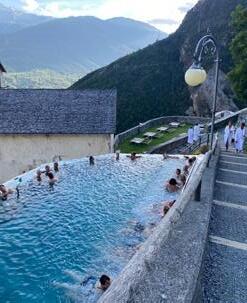
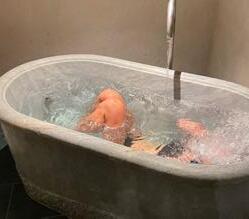
High in the Italian Alps, a few sharp mountain turns from the Stelvio Pass, you’ll find the ancient natural thermal waters of Terme Bagni Vecchi. The name translates to “old baths”, a fitting title for the oldest spa in the Lombardy region of Italy. Perched on the side of a mountain, this rabbit warren of a bathhouse features a mix of outdoor bathing with mountainous views, indoor pools, grottos, saunas, steam rooms, and more. There’s a hotel element attached to the bathhouse that clashes modern luxury with the crumbling grandeur of the old baths in a very unique way. Ultimately, you lose yourself to both the maze and charm of the bustling space as you find new corners to soak in the waters, history and views.•
HAVE YOU VISITED A BUCKETLIST BATHHOUSE SOMEWHERE ON OUR BEAUTIFUL PLANET, AND WANT TO SHARE IT? WRITE TO US: HELLO@SOS-SENSEOFSELF.COM
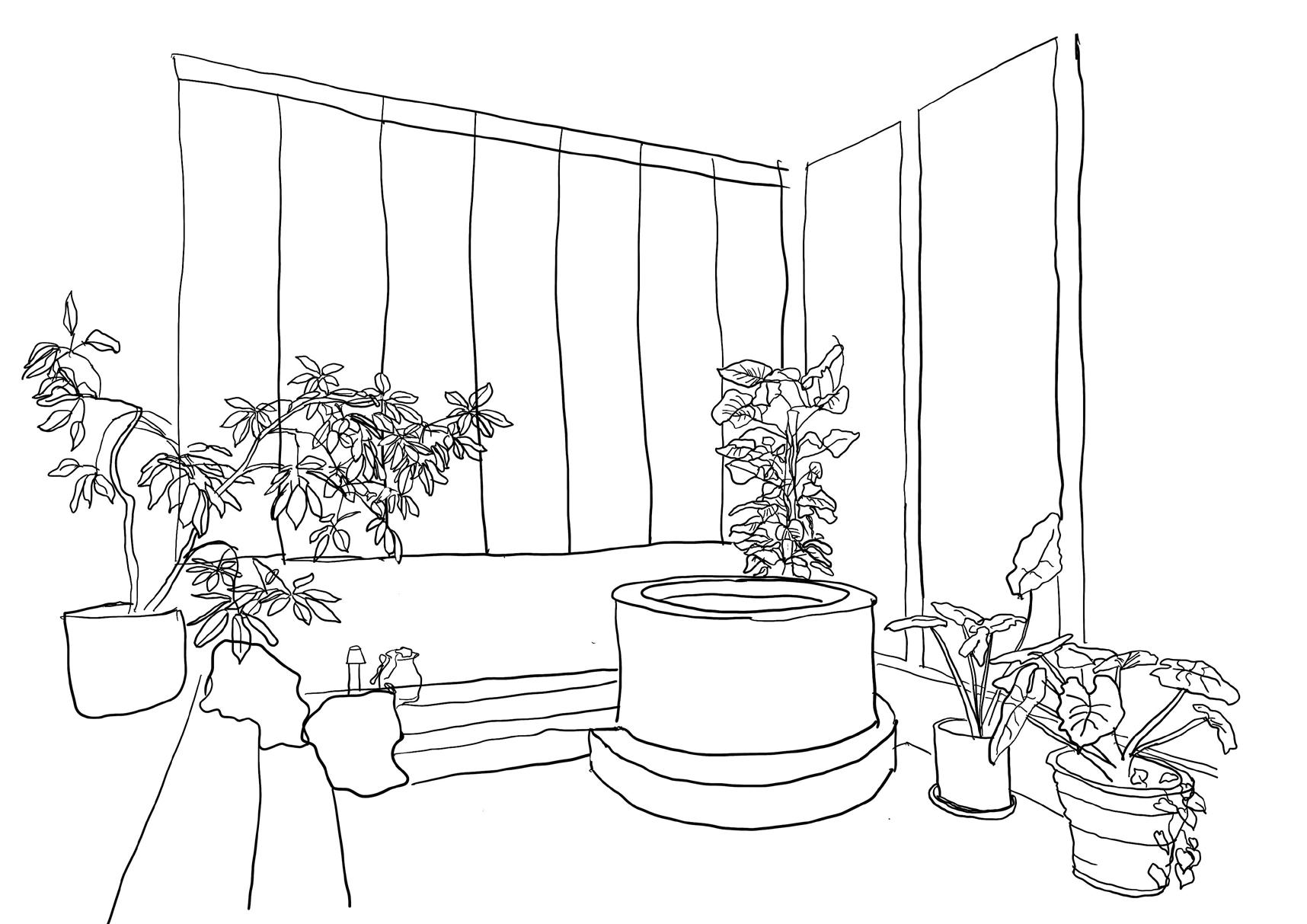
COLOUR IN THE BATHHOUSE AND MAKE IT YOUR OWN.

Repetition is both a staple and a given, in our daily activities of rest and work, in the traditions we enact or celebrate yearly. These repetitions can be welcomed or simply done because of necessity. A difference we may consider less is the one between routine and ritual.
Both have the essential element of repetition, but it’s thought that it is our mindset and feelings around those acts that distinguish the routine from the ritual. As an article in The Marginalian describes it, “while routine aims to make the chaos of everyday life more containable and controllable, ritual aims to imbue the mundane with an element of the magical.” Cooking a meal with a housemate or partner serves a purpose of nourishment, a routine to mark the end of the day. Special occasions like a birthday or celebration might elevate this shared meal - by lighting candles and eating outside, or going to a favourite restaurant - to a ritual.
THE PRACTICE OF BATHING MARKS THIS ELEVATION IN BEAUTIFUL WAYS. THE ESSENTIAL ACT OF CLEANSING IS IMBUED BY CULTURES AROUND THE WORLD WITH THAT “ELEMENT OF THE MAGICAL.” WHILE THE WORD RITUAL MIGHT HAVE ONCE BEEN CONFINED IN MEANING TO RELIGION, RITES AND THE FESTIVAL CALENDAR, NOWADAYS IT EXPANDS TO EMBRACE THE SECULAR AND EVEN THE EVERYDAY.
We see this enacted in bathing cultures whereby tradition and religion blend or change with time. When we create our own rituals and perhaps embrace aspects of those from other cultures, we can mistakenly think they are ‘extra’, an additional thing that would be nice if we can find the time. What seems most fundamental in finding ritual is embracing it as a life essential that makes us feel good, not as a reward or rare luxury.
Bathhouses, while at first appearing to have similar essential elements across many cultures, are distinguished in rich and fascinating ways by the rituals attached to each region and culture.
According to an article from the BBC, ‘The origins of bathhouse culture around the world’, from 600AD the Turkish hammams were “spaces where major life events were celebrated, and bathing rituals were incorporated into weddings and births.”
Objects also play an important role in ritual: towel and sandals, the peștemal to cloak the body or lie on out of the water and the keşe mitt to cleanse the skin in Turkey, the veniki birch tree brush in the Russian banya. The article goes on to explain the rituals of the Native American sweat lodge, where “participants in the sweat ritual gather inside a dome-shaped hut or tent, where a pile of heated rocks lies in the middle. A sweat leader tends to the rocks and may pour water on top to fill the lodge with steam…[and] leads the group in prayer and song. During the ceremony, offerings such as tobacco may be made to the spirits.” This ritual may last for hours, with breaks in between for fresh air and water.
In Japan, the onsen is the place for hot spring bathing, often in the countryside, where in winter you can find yourself in a steaming hot pool outdoors in the snow. The sento is the public bath found commonly in urban settings. In cities where flats or houses might be small, a trip to the local sento might be a nightly ritual. In both Japanese onsen and Korean jimjilbangs, nudity is the norm.
When it comes to creating rituals in our own lives, to calm or energise or strengthen us, bathing cultures around the world teach us what is possible. As The Marginalian article tells us, “the structure of routine comforts us, and the specialness of ritual vitalises us.” From the communal and cultural we can carve out what suits us, a rhythm and ritual that meets us where we are.

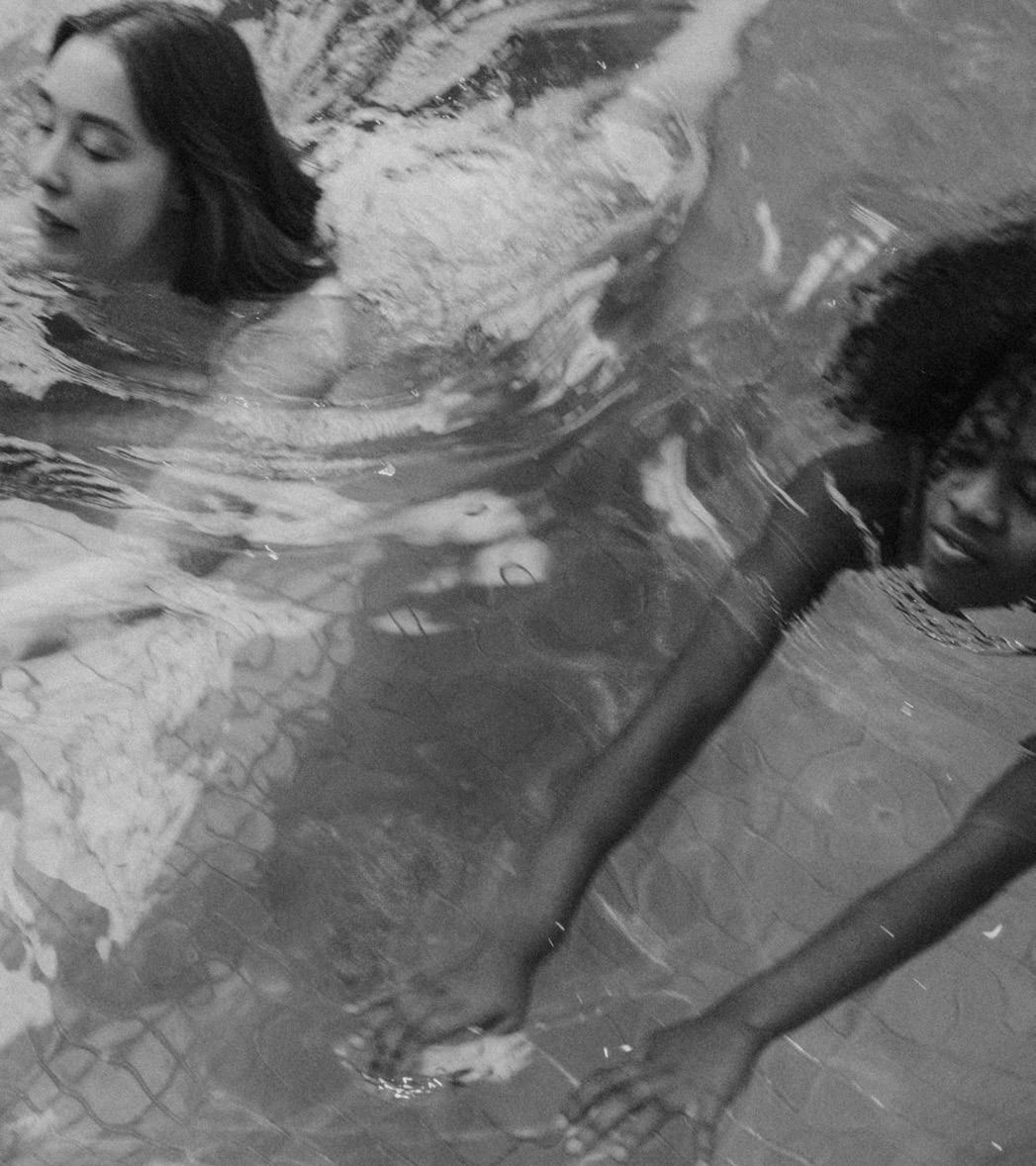
While submerging into a warm bath at home might soak the bones and clean the body, the Japanese concept of ‘skinship’ illuminates the benefits of venturing to a bathhouse and sharing the experience with others.
The term skinship was first used in Japan in the 1950s. It spoke to the importance of embracing and holding hands (skin contact) between family members. It has also often been used in relation to carrying a child into water, close to one’s chest.
It is connected to the traditional concept of hadaka no tsukiai, which roughly translates to bathing with people who are important to you. Shuji Hayashi wrote that when members of any group “strip and bathe together, an intimacy - ‘skinship’ - deepens friendship.”
Japan is home to thousands of natural hot springs and neighbourhood bathhouses. The ritual of shedding layers and luxuriating in warm water with others is still a regular practice.
Even on Naoshima, the country’s modern art island, a sento was built for both “residents to rejuvenate and exchanges between visitors and locals to take place.”
In his seminal work about Japanese aesthetics, Meiji-era writer Junichiro Tanizaki praised traditional architects for imbuing beauty into bathrooms. He reflected on how they “made poetry of everything in their lives [and] transformed what should be the most unsanitary room in the house into a place of unsurpassed elegance.”
We aim to celebrate this elevation of the everyday, be it in the round window in the hammam or a brass hook to hang your robe outside our cedar sauna. In a communal bathhouse, these touchpoints become a way of experiencing space with others.
In Japan, like many countries, the ritual of shared bathing is a source of a national pride and identity. Some sources say the idea of bonding in the bathhouse finds its origins deep in the country’s spiritual history.
Public bathhouses were originally built by monks, where they could bathe in the halls of temples. These pools offered an opportunity for purification, but the idea of hadaka no tsukiai embodies a sense of equality, the coming together of ordinary beings (or non buddhas). And skinship is what people may feel when submerged in community.
This serves as a soft reminder that socialising need not be loud or even embedded in words, but gestures. Gentle coexistence is proven to calm us down. We regulate one another’s nervous systems.
Sharing a bath requires trust in others and the removal of clothing represents the discarding of status symbols that exist outside the spa. What we leave at the door might open us up to what we draw from others in the bath.
PUBLIC BATHHOUSES WERE ORIGINALLY BUILT BY MONKS, WHERE THEY COULD BATHE IN THE HALLS OF TEMPLES. THESE POOLS OFFERED AN OPPORTUNITY FOR PURIFICATION, BUT THE IDEA OF HADAKA NO TSUKIAI EMBODIES A SENSE OF EQUALITY, THE COMING TOGETHER OF ORDINARY BEINGS (OR NON BUDDHAS).
SKINSHIP IS WHAT PEOPLE MAY FEEL WHEN SUBMERGED IN COMMUNITY.



María Angelico is an award-winning actor, writer and artist based in Australia. María works extensively on screen, most notably in Netflix’s series Sisters; ABC’s The Newsreader; Binge original Strife, Netflix’s Stateless produced by Cate Blanchett; ABC’s Retrograde, Blizzards’ World of Warcraft and in her recent debut one woman show, The Disappearing Act at the Malthouse Theatre for the Melbourne International Comedy Festival 2022. María is currently in production for feature film Birthright and in development for a new comedy series she’s creating with Matchbox Pictures.

FIRST OF ALL, LET’S TALK ABOUT BATHING - ARE YOU A REGULAR VISITOR TO A BATHHOUSE, POOL, BEACH? WHAT DOES BATHING MEAN TO YOU?
My mother used to joke that we were secretly mermaids pretending to be human because as long as I can remember, any chance we had to swim or dunk in a body of water we would: the ocean, a bay, a pool, river, lake or even a dam… anything, with gusto and no hesitation whatsoever. So yes, I’m a regular bather big time. My favourite is the sea, there’s nothing quite like the feel of warm sand and salt on my skin that makes me feel deeply happy
Living in inner city Melbourne however, I’m a regular bather in my outdoor bathtub (which sounds more glamorous than it is, unfortunately there’s no drain so I have to empty it with a bucket) and of course at Sense Of Self! Thank goodness SOS exists! I love a soak, steam, sauna and cold plunge - that cycle is the perfect reset for my body and mind. To me, bathing and soaking is such a pure form of self care, it’s a gentle loving way to bring myself back into my body and treat it with love and appreciation.
WE’D LOVE TO HEAR ABOUT YOUR CREATIVE PRACTICE. WHAT DOES A TYPICAL DAY OR WEEK LOOK LIKE FOR YOU?
A typical week in my career doesn’t really exist. Working in film and TV, my routines change regularly and I often find myself spontaneously juggling multiple jobs at once and travelling at the drop of a hat.
When I’m auditioning, preparing for shoots or in development for writing, my days can include lots of reading, line learning, conversations with collaborators, researching, problem solving and daydreaming. In these times, soaking and bathing is a great way to ponder on my work without distracting temptations.
I also take long walks with my sweet Aussie Shepherd Peta, or spend time cooking whilst learning lines. Visuals and music are also a big part of my creative process so I’ll usually be making playlists and Pinterest for my characters which help anchor me in my work.
When I’m shooting however, my creative process is different, as I’m only focussing on one job at a time usually. Shooting hours are pretty crazy with early mornings and late nights, so I try to focus on getting good sleep (a sauna after I wrap for the day is great for it). I usually try to eat well and drink less. I spend my mornings preparing for the day ahead so once I’m on set I’m relaxed and can be playful. I usually spend my evenings zoning out to a trashy tv show; there is nothing like an episode of Real Housewives to unwind to. Lastly, I love making friends and find myself to be more creatively confident when I feel connected with the artists I’m collaborating with on set. You’ll often find me chatting about anything under the sun or telling silly jokes in between takes, it’s also more fun that way.
IT’S COMMON TO HEAR A LOT ABOUT SELFCARE AND WORK-LIFE BALANCE, SO MUCH THAT IT’S SOMETIMES HARD TO APPRECIATE WHAT THESE CONCEPTS REALLY MEAN IN OUR EVERYDAY LIVES. WHAT DO THEY MEAN TO YOU, AND DO YOU FIND BALANCE SOMETHING RELATIVELY EASY OR DIFFICULT TO MAINTAIN?
Work life balance is something that has become incredibly important to me particularly in the last year or so. With a career that is driven by me and causes me to focus so much on myself, it’s very easy to let all my self worth and happiness get all tangled with work. For years I made sacrifices and put my career above all else and it took me a while to realise that reaching certain goals is wonderful but doesn’t necessarily solve everything. Sounds cliche I know, but having really strong relationships with close people in my life and investing in my life outside of work is really important for me and my overall health and wellbeing. I now make really clear efforts to put energy and time into my relationships, hobbies, volunteering and creative outlets that are completely unrelated to my career and purely just for love, joy and connection. It’s been incredibly rewarding and grounding and helped me take so much of the pressure off myself in my career, it’s also made any career success I’ve had since feel that much more sweeter.
IT’S CREATIVELY OR JUST LIFE IN GENERAL, HOW DO YOU BREAK OUT OF A FUNK?
Exercise is one of my go-to’s; I’ve been big into yoga and pilates for years. I love working myself into a disgusting sweat in group fitness classes but this year, I just purchased a brand new fabulous sports bra and I’m trying to be a runner also... Wish me luck! Another go-to for me is music and a dance, whether it be alone in my lounge room or at a club with friends, or a class with strangers. Moving to music is like medicine for me and has an amazing power to change my mood very quickly. Sex. Having sex is great, alone or together, it’s one of the best things to pick you up. And lastly, friends: spending time with friends, particularly ones that make me laugh, be silly and listen are heaven!
I recently went to Berlin on a Europe trip and visited a massive bathhouse called Vabali and had my mind absolutely blown. I was there for 8 hours with my partner, it was heaven and I can’t wait to get back there. I’d also love to go to Finland and explore the traditional saunas and cold plunging culture there. Visiting bathhouses and saunas when travelling is one of my favourite things to do.
ACROSS
2. A key element in a sauna that contributes to the sweating environment
6. Writer who praised the poetry and elegance of Japanese bathrooms
9. The largest organ of the human body
10. Italian term for “old baths” located in Lombardy
11. Russian birch tree brush used in a bathhouse
12. Popular material used in Roman bathhouse decorations, often in intricate designs
DOWN
1. Natural hot water springs found throughout Japan
3. Region in Italy known for its natural hot springs, such as Terme di Saturnia and Fosso Bianco
4. Term first used in Japan in the 1950s emphasising family contact
5. Act of creating magical elements in mundane tasks
7. The sauna encourages this state, which helps promote muscle and mind relaxation
8. Sense Of Self invites you to come as you are and take what you ______
LOCAL CAFE: CIBI
“It’s my one stop shop ~ Cibi forever.”
ELLE, MASSAGE THERAPIST
BOOK: THE GREAT MENTAL MODELS, FARNHAM STREET.
“A trove of ways to create an even flow in life.”
RYAN, SENIOR THERAPIST
PODCAST: THE IMPERFECTS
“It’s emotional, it’s hilarious, it’s informative, and it’s really, really, really entertaining.”
ELSA, SUPERVISOR
COMMUNITY: HEART SPACE COLLECTIVE
“Weekly ‘reset rituals’ every Sunday that have been a combination of journaling, stretching and oracle cards.”
TARA, BATHHOUSE ASSISTANT
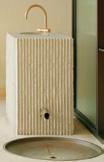








ROLE AT SENSE OF SELF:
Massage Therapist
FAVOURITE TIME TO BATHE:
Mornings. Love the quiet/no talking mornings before I start my shift.
FAVOURITE PART OF THE BATHHOUSE RIGHT NOW AND HOW YOU’RE USING IT?
Sauna and cold plunge. 15 mins at the sauna and 10 deep breaths in the plunge then a 5 mins rest, repeat 3x.
FAVOURITE SPOT FOR LUNCH OR COFFEE?
St Ali in South Melbourne! Beautiful space, good food and awesome coffee. Also the first place I ever went to in Melbourne.
BUCKETLIST BATHHOUSE?
Yurari Onsen in Japan! With Mt. Fuji view.
YOUR FAVOURITE 3 ITEMS IN THE SOS SHOP AT THE MOMENT?
SOS Essential Oil, SOS Hat (I’m a hat guy) and the incense.
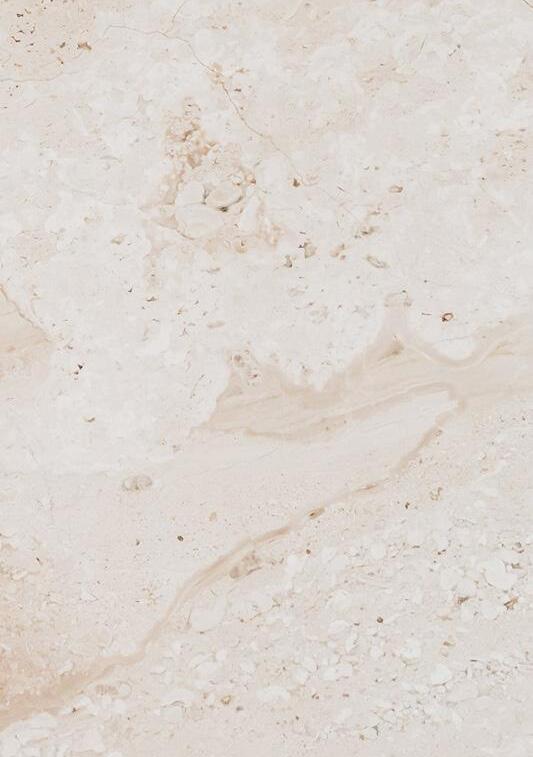
PODCAST: EMERGENCY INTERCOM
“Silly and special friendships just energise me. It has me giggling and smiling to myself in public.”
CATE, BATHHOUSE ASSISTANT
LOCAL BAR: MOON BAR
“Beautiful wine.”
TARA, BATHHOUSE ASSISTANT
BOOK: UGLY LOVE BY COLLEEN HOOVER
“I loved the style of writing and was captivated by the story from the first chapter.”
GRACE, FRONT OF HOUSE TEAM LEAD
Interested in contributing to next issue of The Dip? We love connecting with creative folks with an afiinity for bathing. Email us your ideas to hello@sos-senseofself.com

“All of the Onsen Saru products, the packaging has me sold.”
STELLA, BATHHOUSE ASSISTANT
“I love love love the AYU scented oil in ODE.”
CATE, BATHHOUSE ASSISTANT
“The Købn range.”
RYAN, SENIOR THERAPIST
“The new cobalt blue Bond-Eye swimwear”
ELSA, SUPERVISOR
INTERESTED IN LEARNING
MORE ABOUT SENSE OF SELF? SCAN THE QR CODE → → →
